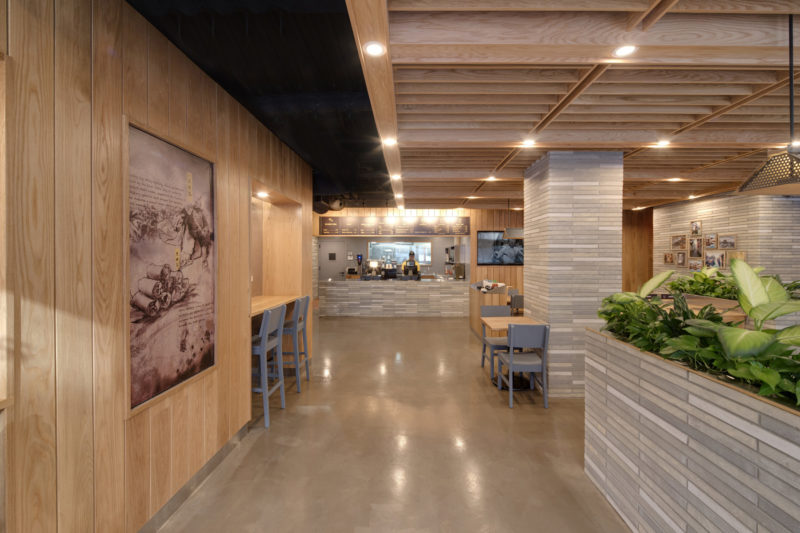3 Times Restaurants
CategoryBars + RestaurantsYear2019
LocationNew York, NY
Size700 s.f
Our approach to any food & beverage concept starts with the menu. Our client’s inspired take on Shi Bing Tong, a portable wrap from home, served as the beginning of an equally inspired plan: To create a portable concept that would allow them to roll-out over 100 locations in just 4 years.
We led an immersive marketplace study to evaluate how this relatively new concept might adapt to the tastes of the American foodie culture. The key to this approach was to balance the desire for adventure and discovery, with the new health paradigms currently driving the fast-casual space, and to shed some common misconceptions around Chinese cuisine in general.
In the case of 3 Times, our early investigations took us to the ancient city of Taizhou, in China’s Zhejiang Province, and the origins of this cuisine. While influence of the traditional Chinese home, the Siheyuan, was a fundamental starting point for inspiration, our approach to this concept led our studies toward strategically modernizing (as opposed to sanitizing) traditional space through material juxtapositions.
Classic clay brick and wood, the dominant regional materials of the Siheyuans, was abstracted to newer modern forms and proportions, giving the space the color and texture of a traditional space but with a distinctively modern edge.
The centerpiece of each location is the communal table, visually anchored by a custom pendant light inspired by the roof forms found throughout the ancient and disappearing Hutong neighborhoods of China. These centerpieces are surrounded by flexible seating arrangements of banquettes and bar seating for individual diners.
The overall effect is one of partaking in a communal meal in the courtyard of a Chinese Siheyuan. Like the food, it is an intentionally modern take on a timeless experience.
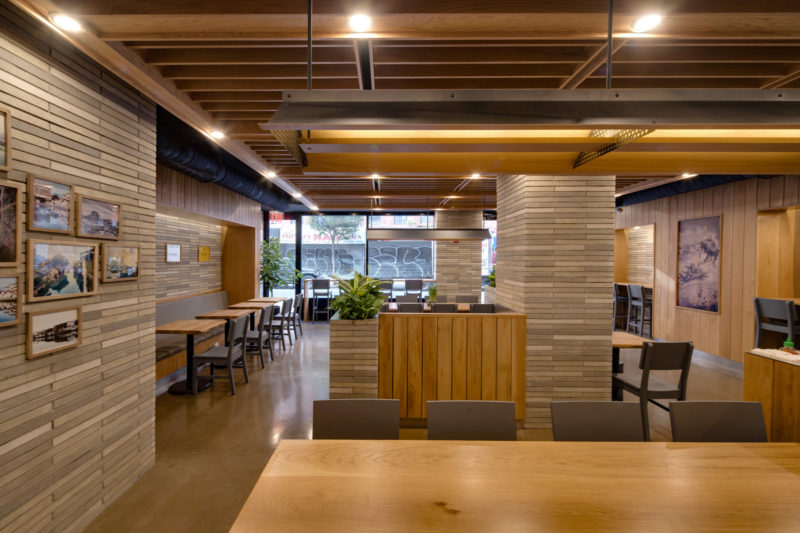
Classic clay brick and wood, the dominant regional materials of the Siheyuans, was abstracted to newer modern forms and proportions, giving the space the color and texture of a traditional space but with a distinctively modern edge.
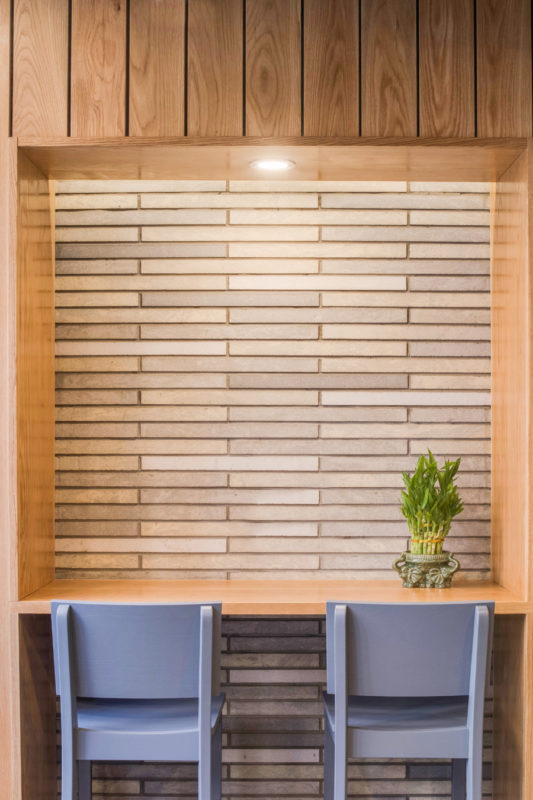
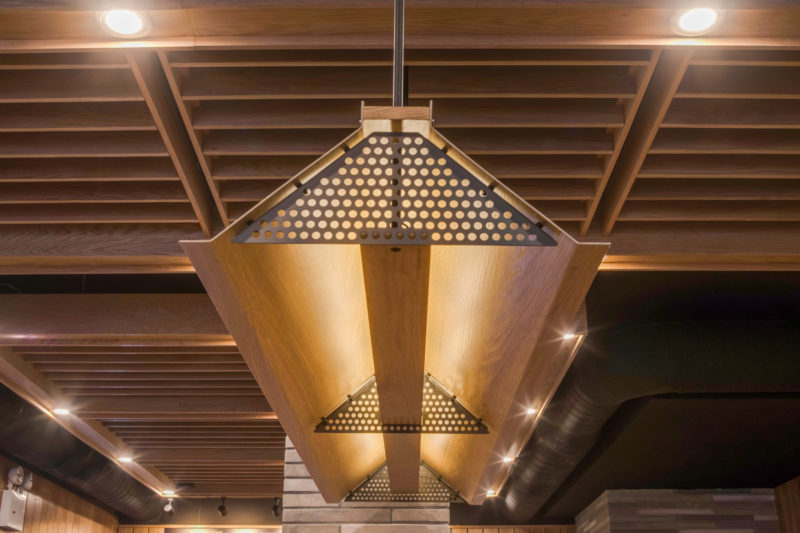
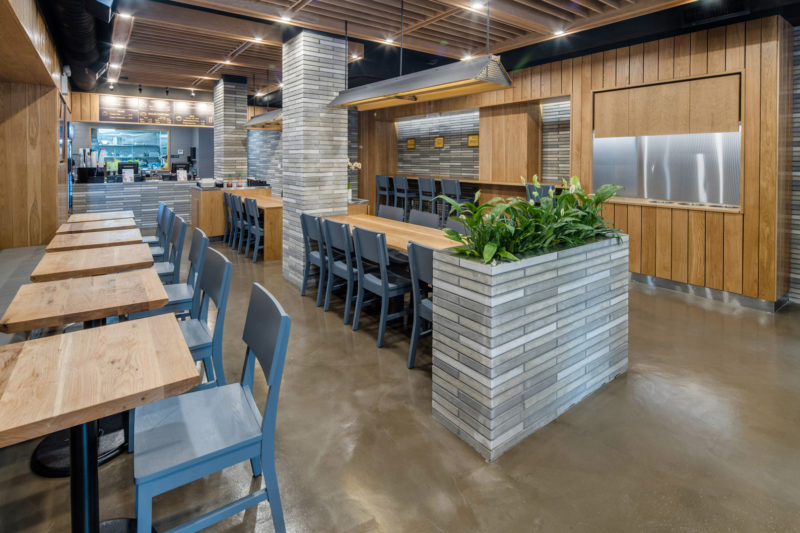

Every location incorporates a floating, modular wood trellis, devised to conceal the building systems and lighting in the ceiling, while also baffling the reflection of sound in a space comprised entirely of hard, cleanable surfaces.
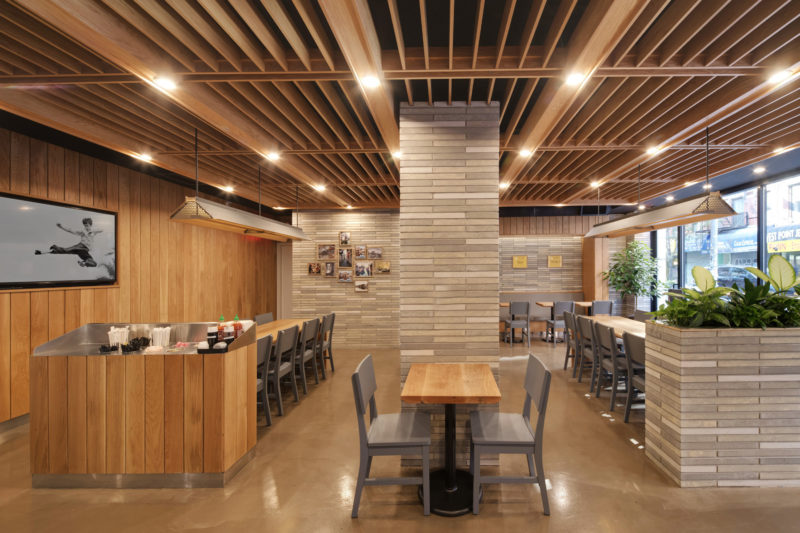
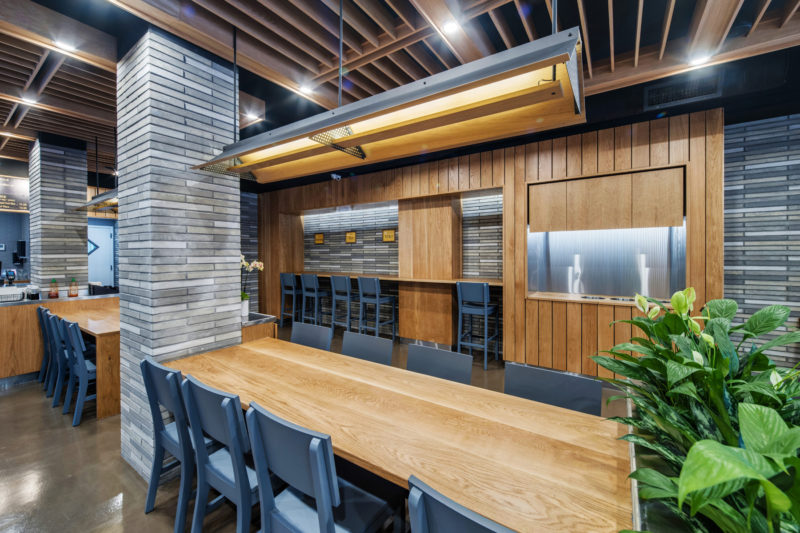
The centerpiece of each location is the communal table, visually anchored by a custom pendant light inspired by the roof forms found throughout the ancient and disappearing Hutong neighborhoods of China.
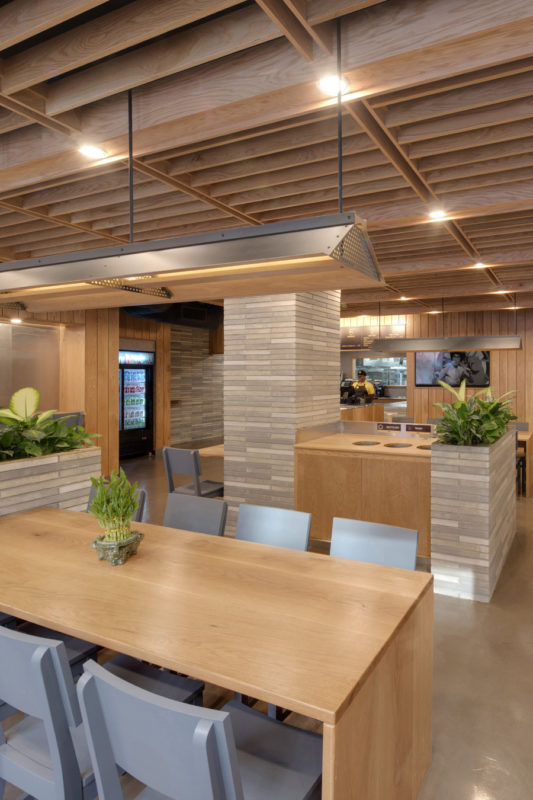
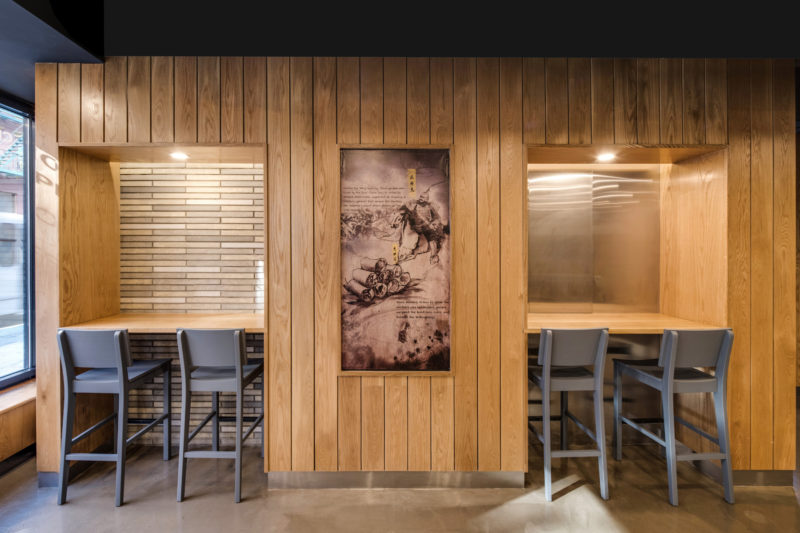
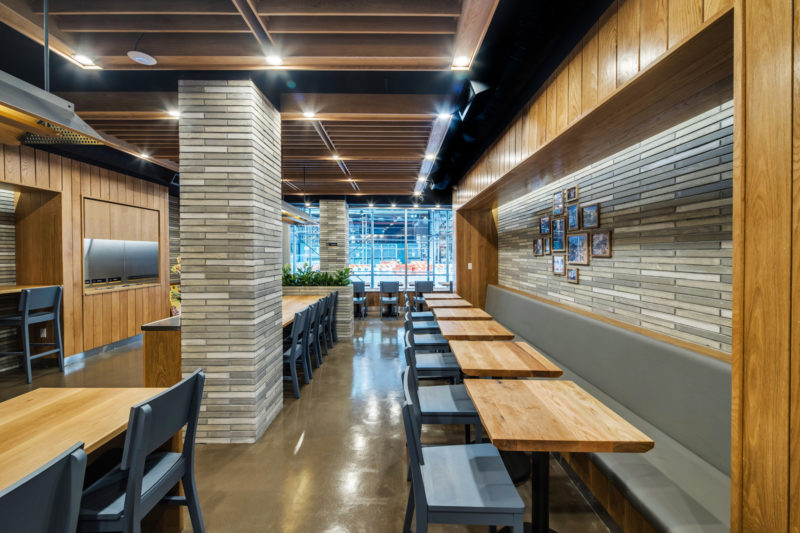
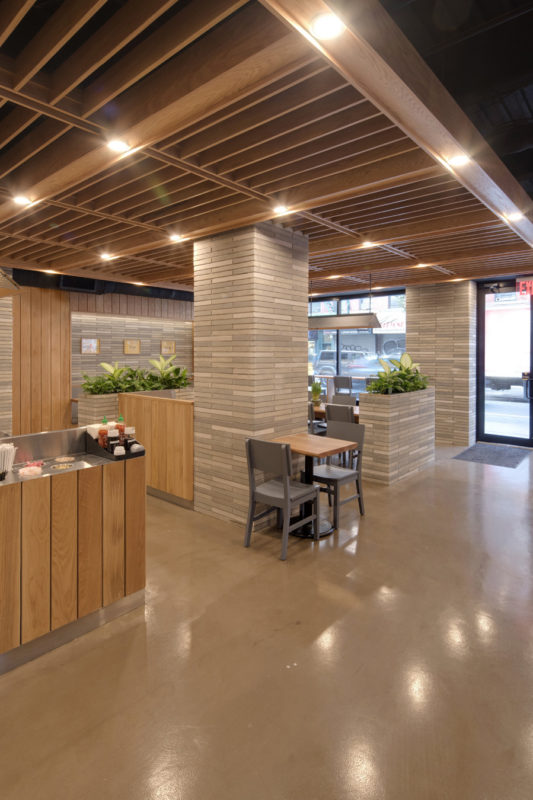
The overall effect is one of partaking in a communal meal in the courtyard of a Chinese Siheyuan.
